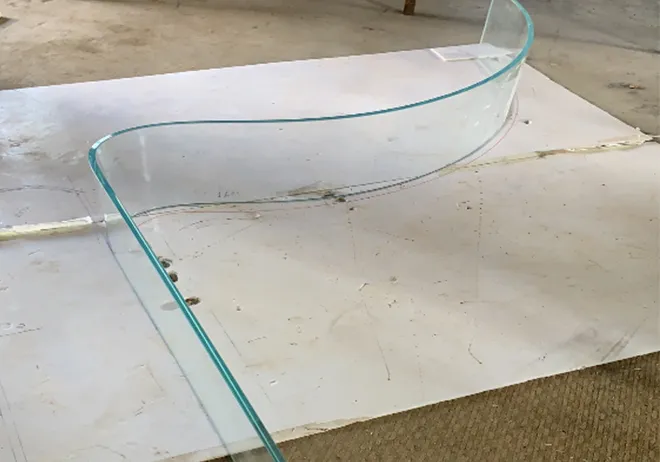Nov . 12, 2024 18:56 Back to list
float glass tin bath
The Float Glass Tin Bath An Overview of its Importance and Functionality
The float glass process is one of the most significant technological advancements in the glass manufacturing industry. This innovative technique enables the production of high-quality flat glass, which has found its applications in numerous sectors, including architecture, automotive, solar panels, and electronics. Central to this process is the tin bath, a critical component that plays a vital role in ensuring the smooth production of float glass.
The Float Glass Process A Brief Insight
The float glass process, invented by Sir Alastair Pilkington in the 1950s, involves the continuous production of flat glass sheets by floating molten glass on a bed of molten tin. The fundamental principle behind this method is relatively simple by pouring molten glass onto a liquid metal, the glass spreads out evenly, forming a flat surface due to the difference in density between the two materials.
Molten glass, usually a mixture of silica, soda, and lime, is heated in a furnace to around 1,600 degrees Celsius. It is then introduced into the tin bath, which is kept at a slightly lower temperature. The tin, which has a melting point of approximately 232 degrees Celsius, remains liquid at this temperature and serves as a stable foundation for the floating glass.
The Role of the Tin Bath
The tin bath serves several crucial functions in the float glass process. First and foremost, it provides a perfectly smooth surface for the glass to float on, which is vital for achieving the desired thickness and optical clarity of the final product. Any imperfections on the surface could result in defects in the glass, affecting its quality.
Furthermore, the tin bath plays an essential role in controlling the temperature and viscosity of the molten glass. By maintaining specific thermal conditions within the bath, manufacturers can ensure uniformity in the glass's properties. This consistency is crucial, especially in applications where precision is key, such as in the production of glass for solar panels.
Another equally important function of the tin bath is its ability to trap impurities and bubbles. As the molten glass spreads over the tin, any foreign particles or gases present in the glass can rise to the surface and be eliminated, resulting in a cleaner end product. The removal of these impurities is particularly important in high-end applications where clarity and purity are essential.
float glass tin bath

Evolution and Innovations
Over the years, advancements in technology have led to enhancements in the design and operation of tin baths. Innovations such as the use of advanced materials and coatings have been developed to improve the durability and efficiency of the tin bath. These improvements not only enhance the lifespan of the tin bath but also contribute to the energy efficiency of the entire float glass production process.
Additionally, modern facilities are often equipped with automated systems for better temperature control and monitoring of the glass production process. These systems help in minimizing waste and maximizing output, thereby reducing the environmental impact associated with glass manufacturing.
Environmental Considerations
The float glass process, and specifically the tin bath, has also been subject to scrutiny concerning environmental impact. The production of float glass can be energy-intensive, and the use of tin, while effective, raises questions regarding the sustainability of materials. Thus, manufacturers are under increasing pressure to adopt greener practices.
Implementing strategies such as recycling glass and developing more energy-efficient furnaces can mitigate some of the environmental concerns associated with glass production. Additionally, investigating alternative materials for the tin bath may be a potential avenue for reducing environmental footprints while maintaining the quality of the glass produced.
Conclusion
In conclusion, the float glass tin bath is an essential component of the float glass production process. By providing a smooth surface and ensuring the removal of impurities, the tin bath plays a vital role in producing high-quality flat glass critical for various applications. As technology advances and environmental pressures increase, the evolution of the float glass process, including tin bath innovations, will likely shape the future of the glass manufacturing industry. With the right balance of quality, efficiency, and sustainability, the float glass process will continue to meet the demands of modern society for years to come.
-
Safety and Style with Premium Laminated Glass Solutions
NewsJun.24,2025
-
Reinvents Security with Premium Wired Glass
NewsJun.24,2025
-
Premium Float Glass Line for Modern Architecture
NewsJun.24,2025
-
Low Emissivity Glass for Energy-Efficient Architecture
NewsJun.24,2025
-
High-Performance Insulated Glass Solutions for Modern Architecture
NewsJun.24,2025
-
Elevates Interior Style with Premium Silver Mirror
NewsJun.24,2025
Related PRODUCTS














